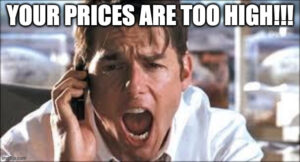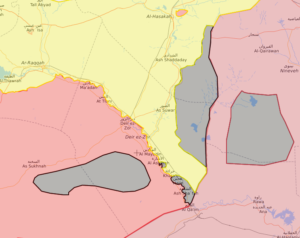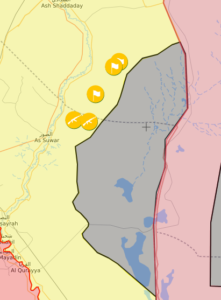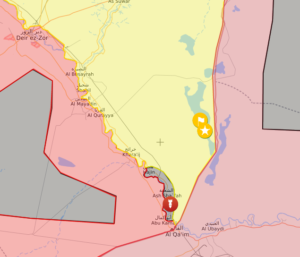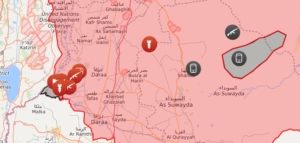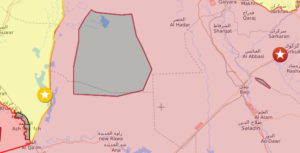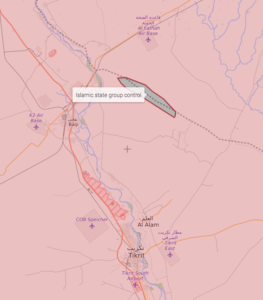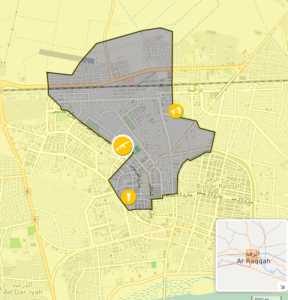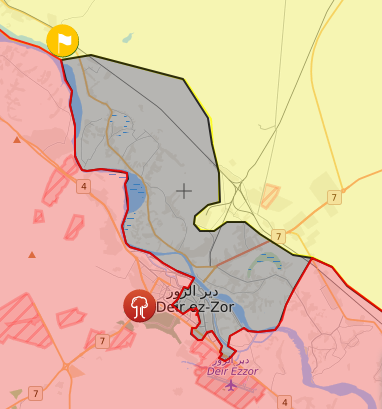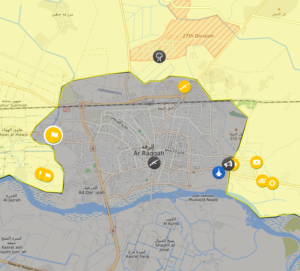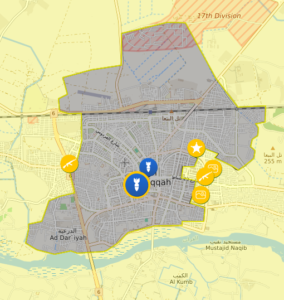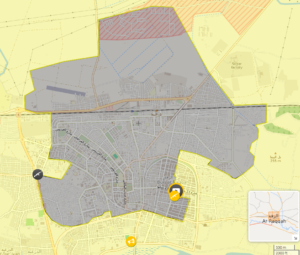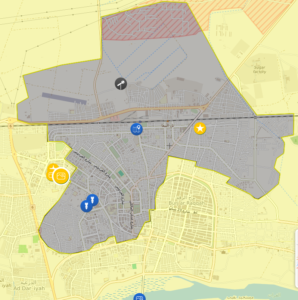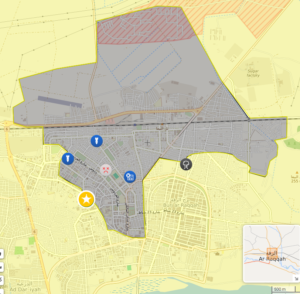Greetings, and welcome to the Friday LinkSwarm! This one will be huge, since I didn’t do one last week. Biden pardons his crackhead/bagman son, Holman is serious about deporting illegal aliens, Trump taps some Texans,
Not only is Donald Trump returning to the White House, not only do Republicans have 53 Senate seats and about 220 seats to control the House of Representatives, but Republicans now control almost 55 percent of state legislative seats nationwide. Republicans won control of the Michigan state house of representatives, and the Minnesota state house of representatives shifted from a 70–64 Democratic advantage to a 67–67 tie. (Rough year for Tim Walz all around.) Twenty-three states have Republican governors and GOP-controlled state legislatures, just 15 states have the Democratic equivalent, and twelve states have divided governments.
If the election of Trump came as a shock to Democrats, it is perhaps even more shocking that, at least for now, a solid majority of Americans are giving the incoming president the benefit of the doubt. The latest Economist/YouGov poll found 51 percent of Americans have a very or somewhat favorable opinion of Trump, the highest level going back at least as far as the start of his first term as president. For a long, long stretch, that number was around 40 percent.
This weekend a CBS News poll found that 59 percent of Americans approve of how Trump is handling the transition. Perhaps this figure reflects that Trump’s announced cabinet picks have something for everyone. For hawks, there’s Marco Rubio. For doves and Syrian dictator Bashar al-Assad, there’s Tulsi Gabbard. For those who see the Covid vaccines as “a gift from God,” there’s the surgeon general nominee, Dr. Janette Nesheiwat. For those who hate vaccines and erroneously believe they cause autism, there’s Robert F. Kennedy Jr. For those who love dogs, there’s attorney general nominee Pam Bondi, who adopted a dog abandoned during Hurricane Katrina. For those who hate dogs, there’s Kristi Noem.
That CBS poll also found that “there seems to be a sense of exhaustion, as fewer than half of Democrats feel motivated to oppose Trump right now.” And who can begrudge Democrats exhaustion after an election cycle that arguably started a week after the midterm elections? Saul Alinsky warned in Rules for Radicals, “A tactic that drags on for too long becomes a drag. Commitment may become ritualistic as people turn to other issues.”
Evidently nine years of Trump Derangement Syndrome can be exhausting…
You’re in the country illegally, you’re not off the table. I mean we’ve been looking for fugitives. There’s over a million illegal aliens in this country who got due process at great taxpayer expense, were ordered removed by a judge, and failed to leave.
We’ll be moving on to those who may not be a criminal, may not be a fugitive, but they entered this country illegally, which is a crime. And they’re here illegally and they’re not off the table.
Bill Wells, the mayor of El Cajon, California, claimed in a Monday post on X that the State of California “is threatening to take pensions and charge police officers with felonies if they comply with federal deportation laws. While the Trump administration is working to enforce immigration laws, California seems intent on blocking these efforts.”
Wells makes it clear that El Cajon, a city of approximately 100,000 people located 17 miles east of San Diego, is not a sanctuary city and that his police officers “are being put in an impossible position.”
Maybe Homan can start preparing an indictment against Gavin Newsom.
It’s insulting when members of the working class, which the Democratic Party has lost entirely in our lifetimes, to insist the economy is doing great. A 12-pack of Bounty is $40. Rich folks don’t feel that…
I think telling them that the Nasdaq is gangbusters is further insulting. It’s insulting, the biggest unforced error of the Biden administration, by far, was the border. To tell people that it’s not a problem is insulting. For the working class to see incoming migrants getting welcome bags, debit cards, and motel rooms is probably insulting as well …
They handed out camo hats that said ‘Harris-Walz’ the Democrats were kind of charmed by that. Their party has gone quinoa and the rest of America is eating at Cracker Barrel … it was an ironic use of something that millions of Americans put on their heads to start their day every day.
Harvard University’s celebrated pollster John Della Volpe has a message for the new leader of the Democratic Party: Move fast with proven solutions for voters who are hurting, or the party is doomed.
“Millions of Americans aren’t shifting right — they’re walking away. They’re abandoning a Democratic Party and democratic system they believe abandoned them first. This isn’t realignment — it’s abandonment,” the pollster known for his surveys of the youth vote said.
In a memo to the incoming leader of the Democratic National Committee posted on his Substack, “JDV on Gen Z,” Della Volpe was blunt in his assessment of the nation and the 2024 election. The bottom line for the Democrats, he said, is that it needs a massive reinvention and focus on kitchen-table issues and less on wokeness.
“This post-election analysis should not start with the question about moving left or right. It must begin by filling the vacuum of unaddressed daily struggles before it gets filled with something else. The typical response will be to fill that vacuum with new policies, messages, or words. But that’s precisely backward. Before we can talk about solutions, we need to rebuild trust. Before we can restore trust, we need to listen. Really listen,” he wrote.
(Hat tip: Instapundit.)

(Hat tip: Sarah Hoyt at Instapundit.)
Corporate media outlets have buried, downplayed, or otherwise shelved a new study which reveals that “diversity, equity, and inclusion” (DEI) policies cause people to become ‘hostile’ – essentially seeing racism where none exists.
The new study from the Network Contagion Research Institute (NCRI) and Rutgers University found that people exposed to DEI talking points about race, religion and gender form integroup hostility and authoritarian attitudes towards others.
“What we did was we took a lot of these ideas that were found to still be very prominent in a lot of these DEI lectures and interventions and training,” said NCRI Chief Science Officer Joel Finkelstein, a co-author of the study. “And we said, ‘Well, how is this going to affect people?’ What we found is that when people are exposed to this ideology, what happens is they become hostile without any indication that anything racist has happened.”
Researchers exposed 324 participants to two sets of reading material; a racially-neutral text about corn, or the writings of race-baiters Ibram X. Kendi or Robin DiAngelo. The participants were then exposed to a racially neutral scenario in which a student was rejected from college.
Social justice always makes everything worse.
President Donald Trump’s return to power earlier this month was remarkable—among other reasons—for the breadth of the coalition that powered it. As Armin Rosen has documented for Tablet, by many measures Jews swung toward Trump, particularly in pivotal precincts. But they were just part of a minority-group wave: Exit polling and precinct analysis suggest large increases in the Black, Hispanic, and Asian vote for Trump.
Although Trump did not win outright majorities of any of these groups, Harris’ underperformance still marks a remarkable shift. The president slandered as a racist and antisemite outperformed prior Republicans among minorities of all types: Why?
One easy answer, of course, is the uniform rightward swing of the electorate, fueled by anger over inflation, an uncontrolled border, and Harris’ barely hidden far-left views. And future elections will probably see some bounce back.
But this argument misses the longer trend: Minority voters, once Democratic stalwarts, have been inching toward the GOP for decades. As the Financial Times’ John Burn-Murdoch has showed, the GOP share of the nonwhite vote has been rising on and off since the 2000s. That mirrors trends among Jews: Over the past several elections, the Democratic share of the Jewish vote has shrunk, from around 80% in the 1990s and 2000s to around 70% in the 2010s and 2020s.
As the Jewish demographer Milton Himmelfarb famously wrote, Jews earn like Episcopalians, but vote like Puerto Ricans. If Puerto Ricans and Jews are both moving right, though, then maybe they’re moving right for similar reasons. Explanations that rely on Democratic antisemitism or affection for socialism are special pleading. The neater explanation is that the same social forces are pushing Black, Hispanic, Jewish, and other minority voters toward the Republicans.
Why are minority groups moving right? As a body of political science argues, the answer is the breakdown of the social institutions that kept them voting for group over ideology. Among Jews, a similar, albeit reversed, phenomenon might be happening: The collapse of Jewish communal life might be giving Jews permission to break from the old ideological consensus.
If that’s true, though, it has profound implications for the political future—of the Jews and everyone else.
In a sense, the question is not why minority voters are moving right, but why they have stayed left for so long. After all, Black and Hispanic Democrats are more moderate ideologically than their white Democrat peers. And the ideological gap between white and nonwhite Democrats has only grown in recent years—implying Black and Hispanic voters should be more willing to swing between parties. Yet in 2020, for example, 60% of Black voters who identified as conservative voted for Joe Biden, compared to 9% of white conservatives. Why?
The conventional explanation for this phenomenon is what political scientists call “linked fate,” the tendency of group members to see their individual well-being as linked to the overall well-being of the group, and so to consider group interest in making electoral decisions. Even if a Hispanic voter would prefer conservative policies, for example, she may still vote for the Democrats under the theory that Hispanic group interest is served by doing so. Such thinking is most common among Black Americans, but has been shown to explain Latino voting behavior as well.
The sense of linked fate, though, is in part socially constructed. Minority voters don’t consider their fates to be linked in a vacuum—they reach that conclusion thanks, in part, to the work of social institutions. In their recent book Steadfast Democrats: How Social Forces Shape Black Political Behavior, political scientists Ismail White and Chryl Laird look specifically at Black political identification, including with the Democratic Party. They argue that Blacks’ lopsided support for Democrats is driven by social pressure from the broader Black community.
“The steady reality that Black Americans’ kinship and social networks tend to be populated by other Blacks,” White and Laird write, “means they persistently anticipate social costs for failing to choose Democratic politics and social benefits for compliance with these group expectations.” They show in survey evidence and experiments that Black voters change their behavior when around other Black people—a proxy for the effect of social pressure in general. This “social constraint” strategy helps ensure that Black voters vote their racial identity, even when doing so is apparently at odds with their ideology.
Though it may sound unusual, this is a perfectly rational political strategy for minority groups in a large, pluralistic democracy. Being able to deliver lopsided group margins is one way a minority group’s leaders can curry favor with a party. Indeed, White and Laird identify tendencies toward social constraint among “Southern whites, white evangelical Christians, trade union members, and certain localized racial and ethnic groups.” Social constraint is not necessarily an exception—to the extent that any group has its own political interests, it has a reason to suppress dissent in the ranks.
Can the “social constraint” model explain Jewish voting patterns? As I’ve argued previously, one way to understand Jews’ strong support of Democrats is our unusually strong ideological commitments. Since at least the 19th century, Jews in America have been more left wing than the general public. And they associate those values with their identity. When asked by Pew what things were most essential to being Jewish, a majority of respondents listed “working for justice/equality” as a key component of their identity, with an even larger majority among the non-Orthodox.
But ideology, like partisanship, can be socially constructed. Jews have a strong sense of in-group identity, with 85% saying they have “a great deal” or “some” sense of belonging to the Jewish people. Most Jews have at least some close friends who are Jewish; 29% say all or most of their close friends are Jewish. And Jews are highly concentrated geographically, with roughly half of American Jews living in the New York, Los Angeles, Miami, or Philadelphia metropolitan areas alone.
Collectively, those facts suggest that—like Blacks, and other ethnic minorities—Jews’ “kinship and social networks tend be populated by” other Jews. Even in the non-Orthodox world, a Jewish person’s interactions with both fellow Jews and Jewish institutions may serve to reinforce his ideological commitments. After all, what right-leaning Jew has not been once or twice told his views are a shanda?
If social pressures produce in-group conformity among minority voters, then it stands to reason that they produce ideological conformity among Jews, too. But what happens to that conformity when the social pressures start to break down?
If you wanted to pack the history of the 21st century thus far into a single sentence, you could do worse than “20th-century social institutions collapsed.” As political scientist Robert Putnam has repeatedly argued, Americans have seen a steady decline in “social capital,” the network of interpersonal relationships that provide them informal means of individual security and advancement. The families, churches, and community groups which sustained that capital are in more or less continuous decline. That decline, though, has meant not just a reduction in the available stock of social capital, but also in those institutions’ ability to shape behavior—in their ability to impose social constraint.
Decades of unwillingness to enforce immigration laws were driven by the desire of some for cheap, controllable labor, and of others for a new client class that would shift political power to the Democratic Party. The culmination of that process under Biden became entwined with the identity of the party and its ideological activists who sincerely believe that national borders are an expression of racism and that turning away foreigners who want to move here illegally is immoral. The belief in unlimited, lawless immigration has become a litmus-test issue for the activist left, like hostility to the existence of law enforcement itself.
And because most voters naturally consider that insane, we now see broad public support, including among first-generation migrants, for “mass deportation” and an electoral mandate for what the president-elect has promised will be the “largest deportation effort in American history.”
Restoring credibility after decades of deceit will take time, cost money, get tied up in courts, and inevitably involve an unfortunate measure of human suffering, the images of which will be ruthlessly exploited for political purposes by the media and the interests they serve. But it’s neither the Manhattan Project nor the D-Day landings—it’s simply a matter of enforcing existing law consistently and without apology, which is the legal and popular mandate the American people have given the incoming administration.
Herewith a look at what’s likely to be involved.
When your tub is overflowing, you first turn off the tap. Mass impunity at the border will be the first thing to stop, because there’s no point to deporting people if it’s easy for them to return.
What drove the crisis under Biden was a policy of catch-and-release—millions of border-jumpers were simply waved into the country by a Border Patrol that the current administration turned into the equivalent of Walmart greeters. The illegal migrants told their friends back home, and more came. Human-trafficking cartels turned it into a massive business.
There are two ways to end catch-and-release: 1) detain illegal border-crossers until they can be repatriated, or 2) if they make an asylum claim, ensure that they wait across the border in Mexico for their court dates.
Option 1 will require a significant increase in spending and logistical assistance from the U.S. military. The Biden administration has consistently reduced DHS’s detention capacity, closing government-owned facilities and canceling contracts with private firms and county jails. That pattern will have to be reversed.
Option 2 is cheaper and easier, but requires Mexico’s consent, because the country has no obligation to take back non-Mexican migrants, which account for the majority of attempted crossings. In late 2018, this option was instituted as the “Migrant Protection Protocols” (commonly known as “Remain in Mexico”); Mexico went along with it after President Trump threatened punishing tariffs on its exports to the U.S.
It was successful almost overnight. In January 2021, Biden canceled the program.
Despite the fact that Mexico’s new president is more of a conventional leftist than her predecessor, she is likely to be cooperative with the new Trump administration’s demands to restore Remain in Mexico, given that the U.S.-Mexico trade agreement is up for review in 2026. Access to the U.S. market is far more important to Mexico than any rhetorical solidarity with foreigners using its territory as a means of entering the U.S.
These and other measures (such as “safe third country” agreements requiring migrants to have applied for asylum in one of the countries they passed through before reaching the U.S. border) will succeed in stabilizing the border. But what about those already here? Sending back people who’ve just recently snuck across the border is one thing, but finding and removing those already in the interior is something else altogether.
The Biden administration has released into the country close to 6 million foreigners with no legal right to enter, and another 2 million are believed to have eluded the overwhelmed Border Patrol, the so-called gotaways.
They join a large illegal population already here, though because of constant churn in the illegal population (people returning home, dying, or obtaining a green card), these numbers can’t simply be added to prior estimates. Census Bureau data suggests there are now at least 14 million total illegal aliens—given the imprecision of such estimates, the real number could easily be 15 or 16 million, though higher numbers bandied about by some Republican politicians of 30 or 40 million are implausible.
The opponents of immigration enforcement want to make this seem like an insuperable problem. The American Immigration Council, the think tank of the immigration lawyers’ lobby, has estimated it would cost close to a trillion dollars over a decade to return the illegal population to their home countries.
Vice President-elect Vance addressed this counsel of resignation and surrender by likening the problem to “a really big sandwich. It’s 10 times the size of your mouth. How are you possibly going to eat the whole thing?”
His answer:
you take the first bite and then you take the second bite, and then you take the third bite. Let’s start with the first million who are the most violent criminals, who are the most aggressive. Get them out of here. First prioritize them, and then you see where you are, and you keep on taking bites of the problem, until you get illegal immigration to a serviceable point.
Starting the deportation effort by focusing on criminals is both politically astute and simplest to manage. The Biden administration has reduced deportations of criminals by 67% compared to Trump I, so there’s nowhere to go but up. Criminal aliens are picked up every day by police in the normal course of their duties for all manner of nonimmigration crimes. Taking them off the hands of local law enforcement—either as an alternative to prosecution or after they’ve completed their sentences—is a no-brainer.
Read the whole thing. The people who say it’s impossible are simply lying because they don’t want it done.
President-elect Donald Trump has begun to fill out his cabinet with new names coming each week, and two recent nominations have strong ties to Texas.
Nominated to be Secretary of the United States Department of Housing and Urban Development (HUD), Trump has tapped former member of the Texas Legislature, Scott Turner.
Turner served as a member of the Texas House from 2013 to 2017 — he challenged then-House Speaker Joe Straus, but ultimately lost his run for the gavel.
Trump in his first administration appointed Turner to head the White House Opportunity and Revitalization Council.
The 2025 President’s Budget has requested $72.6 billion for HUD and $185 billion over 10 years for “affordable housing investments.”
Another recent Texan to be nominated for the upcoming Trump cabinet is President and CEO of America First Policy Institute Brooke Rollins.
A native of Glen Rose, Rollins has been chosen as the nominee to become the next Secretary of the U.S. Department of Agriculture (USDA).
“Brooke’s commitment to support the American Farmer, defense of American Food Self-Sufficiency, and the restoration of Agriculture-dependent American Small Towns is second to none,” Trump wrote on TruthSocial.
Rollins held previous positions in the first Trump administration, as well as being president of the Texas Public Policy Foundation.
I like Turner’s starch in running against Straus, and Rollins helped turn TPPF into a think tank power house, so both seem like good picks for Trump. And you’ve got to balance out all the Floridians somehow…
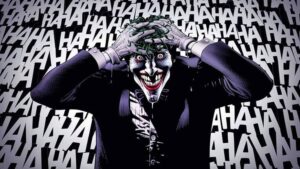
Montgomery County Constable Ryan Gable announced that a three-day operation this month resulted in numerous arrests associated with prostitution, child trafficking, and drug offenses.
The constable’s office collaborated with the Houston Police Department and received support from the Human Trafficking Rescue Alliance (HTRA) and the Houston Metro Internet Crimes Against Children (ICAC) Task Force to successfully carry out this operation.
During a Friday morning press conference, Gable explained working with ICAC was essential, as the internet has become a major platform for those who exploit children and traffic victims for sexual purposes. The partnership between HTRA and ICAC investigations enabled the use of digital forensics and online tracking to uncover trafficking networks. The three-day investigation, dubbed Operation Safe Haven, resulted in numerous arrests and the recovery of one victim.
The operation’s results include:
- Seven arrests for prostitution.
- Three arrests for promotion of prostitution.
- Four arrests for online solicitation of a minor (including the capture of a registered sex offender).
- One arrest for child trafficking.
- One arrest for unlawful possession of a firearm by a convicted felon.
- One arrest for evading law enforcement.
- One arrest for possession of a prohibited weapon.
- Two arrests related to drug offenses.
- One juvenile recovered.
SCOOP: Employees at @Geico are being forced to complete mandatory training courses instructing them to provide their pronouns when engaging with customers and how to deal with being misgendered.
Yet another company pushing gender ideology nonsense. We the people want this… pic.twitter.com/rkBj7lJc63
— Libs of TikTok (@libsoftiktok) November 25, 2024
Maybe you need to look at the emu guys…

